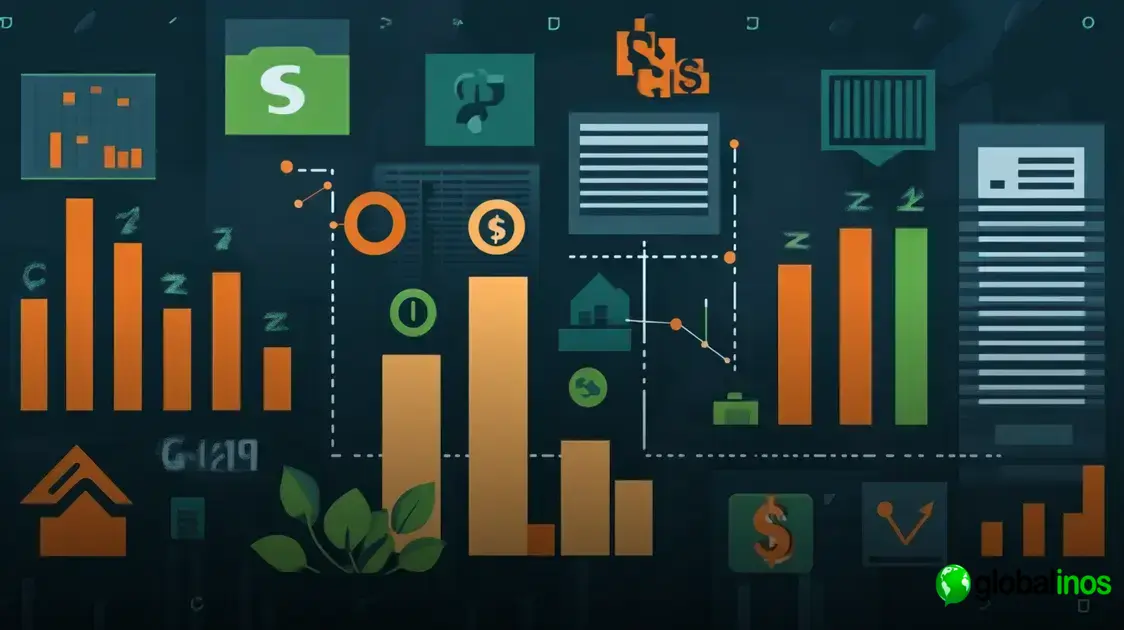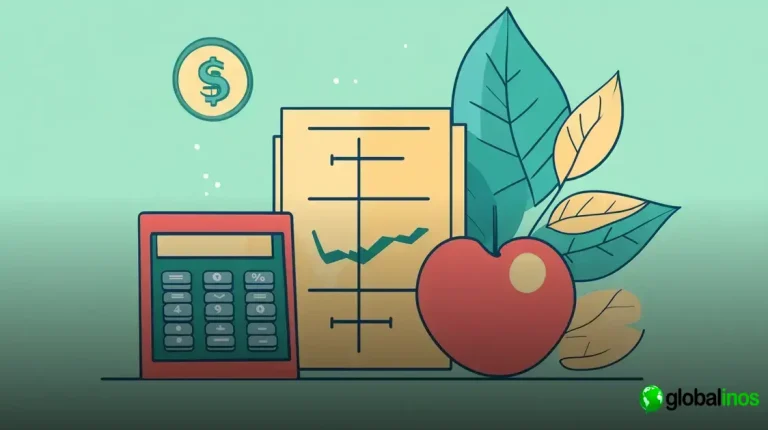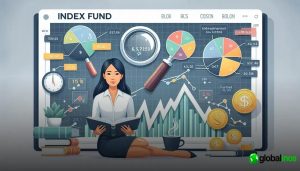Tax-efficient investing is a powerful strategy to help you grow your wealth while minimizing tax burdens. By understanding how taxes affect your investments, you can make smarter financial decisions that preserve more of your returns. Choosing the right accounts and investment vehicles is key to optimizing tax efficiency.
One of the main benefits of tax-efficient investing is reducing unnecessary tax liabilities. Strategies such as using tax-advantaged accounts, managing capital gains, and selecting tax-efficient funds can significantly impact long-term returns. A well-planned approach ensures that taxes don’t erode your investment growth.
If you want to enhance your portfolio, mastering tax-efficient investing is essential. Learn how to structure your investments wisely, lower tax obligations, and maximize returns. Keep reading to discover practical strategies that can help you keep more of your hard-earned money!
Understanding Tax-Efficient Investing
Understanding tax-efficient investing is vital for maximizing your investment returns while minimizing the taxes you have to pay. This means choosing investments that will not only grow your money but will also incur lower tax liabilities. By being mindful of how taxes affect your investments, you can keep more of your profits.
What is Tax-Efficient Investing?
Tax-efficient investing involves selecting assets and strategies that limit the impact of taxes on your overall returns. This can include choosing certain types of investments or accounts that offer tax advantages.
Why is it Important?
Tax considerations play a critical role in how much return you actually pocket from your investments. Even a small increase in tax can significantly reduce your overall earnings over time.
Key Elements
When you look at tax-efficient investing, some key elements come into play:
- Understanding how different types of income, like dividends and capital gains, are taxed.
- Knowing the implications of selling investments prior to holding them for a year, which may trigger higher short-term capital gains tax rates.
- Using specific investment accounts, like IRAs, that defer taxes until withdrawals begin.
Strategies for Tax Efficiency
Some effective strategies include holding investments long-term to benefit from lower long-term capital gains tax rates and utilizing tax-loss harvesting to offset gains with losses. Additionally, being picky about your investment funds can pay off; funds that generate fewer taxable events can leave you with more to reinvest.
Importance of Tax Considerations
The importance of tax considerations in investing cannot be overstated. Taxes can significantly affect your investment returns, and being aware of how they work is essential for any investor. Understanding how different investment types are taxed helps you make better choices.
Impact of Taxes on Returns
When you earn money from investments, you will usually pay taxes on those earnings. This is why considering the tax implications of your investments is crucial. Even a small tax rate can eat into your profits over time.
Different Tax Rates
Investors may face different tax rates depending on the type of income:
- Short-term capital gains: These are profits from selling investments held for one year or less and are taxed at ordinary income tax rates.
- Long-term capital gains: Profits from investments held for more than one year are generally taxed at lower rates.
- Dividends: Qualified dividends may also be taxed at more favorable rates compared to ordinary income.
Tax-Advantaged Accounts
Using tax-advantaged accounts like IRAs and 401(k)s can help you invest without immediately paying taxes on earnings. These accounts often provide tax benefits, such as tax-free growth or tax deductions on contributions.
Realizing Gains and Losses
Being smart about when to sell your investments can greatly affect your tax bill. For instance, if you realize a loss, you might offset it against gains to lower your tax burden. This practice is known as tax-loss harvesting.
Types of Tax-Efficient Investments

There are many types of tax-efficient investments that can help you save money on taxes while growing your wealth. Here are some of the most common options:
1. Index Funds
Index funds are designed to track a specific index, like the S&P 500. They generally have lower turnover rates compared to actively managed funds, which means fewer taxable events.
2. Tax-Managed Funds
Tax-managed funds aim to provide high after-tax returns. These funds are specifically designed to minimize the impact of taxes by avoiding investments that generate high levels of taxable income.
3. Municipal Bonds
Interest earned from municipal bonds is often exempt from federal taxes, and sometimes state taxes as well. This makes them a good choice for investors seeking tax-free income.
4. Exchange-Traded Funds (ETFs)
ETFs are typically tax-efficient because of their unique structure. Investors buy and sell shares of the ETF on the stock exchange, which usually results in fewer capital gains distributions.
5. Real Estate Investment Trusts (REITs)
REITs can be tax-efficient as they are required to distribute at least 90% of their taxable income to shareholders. While these dividends are taxable, holding them in tax-advantaged accounts can minimize taxes.
6. Retirement Accounts
Contributing to retirement accounts like IRAs and 401(k)s allows your investments to grow without immediate tax implications. Taxes are deferred until withdrawals are made during retirement.
7. Growth Stocks
Investing in growth stocks can be tax-efficient as they typically do not pay dividends, leading to fewer taxable events. You only pay taxes when you sell the stocks at a profit.
Each of these investment types has unique tax benefits that can help you enhance your overall returns. By understanding the types of tax-efficient investments available, you can make informed decisions that align with your financial goals.
How to Build a Tax-Efficient Portfolio
Creating a well-structured portfolio is key to tax-efficient investing. Choosing the right accounts, such as IRAs and 401(k)s, allows investments to grow tax-deferred or tax-free, reducing your tax burden while maximizing returns. The right strategy ensures your money works for you efficiently.
Diversification is another crucial element of tax-efficient investing. A balanced mix of stocks, bonds, and tax-efficient funds like ETFs and municipal bonds can help minimize taxable income. Managing capital gains wisely by holding investments long-term further enhances tax savings.
A proactive approach to tax-efficient investing includes tax-loss harvesting, where you sell underperforming assets to offset taxable gains. This strategy reduces your overall tax liability and improves portfolio performance over time.
Regular portfolio reviews ensure your tax-efficient investing strategy remains effective. As tax laws change, staying informed allows you to adjust and maintain an optimized approach that aligns with your financial goals.
By mastering tax-efficient investing, you can protect more of your returns while legally minimizing taxes. Implement these strategies to build a smarter portfolio that supports long-term financial success.
Tax-Loss Harvesting Strategies
Tax-efficient investing includes smart strategies like tax-loss harvesting, which helps investors reduce tax liabilities while maintaining market exposure. By strategically selling underperforming assets, you can offset gains and lower taxable income, making your investments work more efficiently.
The first step in tax-efficient investing through tax-loss harvesting is identifying losses. Reviewing your portfolio to find declining assets allows you to strategically sell them, reducing taxable capital gains. However, it’s essential to follow IRS regulations, such as the wash-sale rule, to ensure compliance.
When reinvesting, choosing different securities instead of repurchasing the same asset is a key aspect of tax-efficient investing. Diversification helps maintain market participation while leveraging tax benefits. Keeping accurate records of transactions ensures smooth tax filing and maximizes savings.
For successful tax-efficient investing, offset gains wisely. If you profit from certain investments, applying realized losses minimizes your taxable earnings. Understanding how to balance gains and losses enhances overall investment efficiency.
By mastering tax-efficient investing strategies like tax-loss harvesting, you can protect your profits while legally reducing taxes. Implementing these techniques ensures long-term financial growth and a more optimized investment portfolio.
Tax-Efficient Fund Selection

Choosing the right funds is a critical part of tax-efficient investing. By selecting tax-efficient funds, you can reduce your tax burden while still working towards your financial goals. Here are some key strategies for effective fund selection:
1. Look for Index Funds
Index funds are usually more tax-efficient than actively managed funds. They have lower turnover rates, which means fewer taxable events and capital gains distributions. This can help you keep more of your investment returns.
2. Consider Tax-Managed Funds
Tax-managed funds are designed specifically to minimize tax liability. These funds use strategies like tax-loss harvesting and invest in securities with favorable tax treatment.
3. Invest in ETFs
Exchange-Traded Funds (ETFs) are typically more tax-efficient due to their unique structure. They generally have lower turnover and create fewer taxable events compared to traditional mutual funds.
4. Check the Fund’s Distribution History
Before investing in any fund, check its distribution history. Funds that frequently distribute capital gains may lead to higher tax liabilities for you. Opt for those with a history of low distributions.
5. Understand the Morningstar Tax Efficiency Ratio
Use metrics like the Morningstar tax efficiency ratio to analyze a fund’s tax performance. This ratio helps you see how much you might owe in taxes based on the fund’s track record.
6. Assess Investment Type
Investing in funds that focus on tax-efficient strategies is essential. Funds that hold municipal bonds or that primarily invest in growth stocks often minimize current income, leading to favorable tax treatment.
7. Pay Attention to Your Personal Tax Situation
Your overall tax bracket and financial goals matter. If you’re in a higher tax bracket, it’s even more crucial to choose tax-efficient funds. Understand how different funds fit your individual tax strategy.
By carefully selecting funds based on these strategies, you can create a more tax-efficient portfolio that helps you retain more of your investment gains.
Long-Term vs. Short-Term Capital Gains
Understanding long-term vs. short-term capital gains is crucial for any investor. These terms refer to the profit made from selling investments and are taxed differently based on how long you hold the asset.
Short-Term Capital Gains
Short-term capital gains apply to investments held for one year or less. Profits from these investments are taxed at your ordinary income tax rates, which can be significantly higher than long-term rates. This means that if you frequently trade stocks or other assets, you could end up paying a lot in taxes.
Long-Term Capital Gains
Long-term capital gains come into play for assets held for longer than one year. These gains are taxed at lower rates, which can be more beneficial for investors. The long-term capital gains tax rates generally range from 0% to 20%, depending on your income level. This tax advantage encourages investors to hold assets longer, potentially leading to higher overall returns.
Tax Strategy Considerations
Since taxes can significantly impact your investment returns, it’s essential to consider which gains you are realizing. By holding investments longer than one year, you can take advantage of the lower tax rates on long-term gains. On the other hand, if you find yourself facing losses, short-term selling may be necessary to offset gains from other investments.
Investing for the Future
When planning investments, focus on long-term strategies that align with your financial goals. Consider how capital gains taxes will affect your overall investment plan. Holding onto quality investments for over a year can lead to better after-tax returns, enhancing your portfolio’s performance.
Retirement Accounts and Tax Efficiency
Retirement accounts play a key role in achieving tax efficiency. These accounts offer significant tax advantages that can help you grow your investments over time. Here’s how they contribute to tax-efficient investing:
1. Tax-Deferred Growth
Many retirement accounts, such as traditional IRAs and 401(k)s, allow your investments to grow without immediate tax implications. This means you won’t pay taxes on your gains, interest, or dividends until you withdraw funds in retirement.
2. Tax-Free Withdrawals
Accounts like Roth IRAs allow you to make tax-free withdrawals in retirement. Contributions are made with after-tax dollars, which means all future growth and withdrawals are tax-free, provided certain conditions are met.
3. Contribution Limits
Retirement accounts often have contribution limits. Making the maximum allowable contributions can significantly boost your savings while maximizing the tax benefits.
4. Employer Contributions
If you have a workplace retirement plan, check if your employer offers matching contributions. This is essentially free money that can enhance your savings and tax efficiency.
5. Strategic Withdrawals
Understanding when and how to withdraw from retirement accounts can impact your tax situation. Careful planning can help you minimize tax implications during retirement.
6. Avoiding Early Withdrawal Penalties
Taking money out of retirement accounts before age 59½ usually incurs a penalty and taxes. Being aware of these rules can help you avoid unnecessary costs.
7. Rebalancing Within Accounts
Rebalancing your portfolio within a tax-advantaged account does not trigger taxable events. This flexibility allows you to maintain your desired investment strategy without incurring taxes.
Utilizing retirement accounts wisely can enhance your overall tax efficiency and help you build a robust financial future.
Common Mistakes in Tax-Efficient Investing

When it comes to tax-efficient investing, avoiding common mistakes can save you a lot of money in taxes. Here are some frequent pitfalls:
1. Ignoring Tax Implications
One major mistake is not considering the tax consequences of investment decisions. Always evaluate how selling an asset or receiving income will affect your tax situation.
2. Overtrading
Frequent buying and selling can lead to short-term capital gains, which are taxed at higher rates. Try to adopt a long-term investment strategy to benefit from lower tax rates.
3. Not Utilizing Tax-Advantaged Accounts
Many investors fail to maximize contributions to tax-advantaged accounts like IRAs and 401(k)s. These accounts allow for tax-deferred growth and, in some cases, tax-free withdrawals.
4. Failing to Consider Fund Expenses
Investing in high-expense funds can eat into your returns. Choose low-cost index funds or exchange-traded funds (ETFs), which tend to be more tax-efficient.
5. Neglecting to Harvest Tax Losses
Not taking advantage of tax-loss harvesting is a missed opportunity. Selling losing investments to offset gains can lower your tax bill, so keep this strategy in mind.
6. Lacking a Diversified Portfolio
Concentrating your investments in a single area can expose you to higher tax liabilities. Build a diversified portfolio to mitigate risk and promote tax efficiency.
7. Overlooking Investment Timing
Taking a short-term approach to investing can trigger higher taxes. Understanding when to buy or sell can significantly influence your tax outcomes.
8. Not Staying Informed
Tax laws and regulations are always changing. Failing to keep up with these updates can result in costly mistakes. Make it a priority to stay informed about tax developments.
Avoiding these common mistakes can improve your tax efficiency and enhance your overall investment returns.
FAQ – Frequently Asked Questions about Tax-Efficient Investing
What is tax-efficient investing?
Tax-efficient investing involves selecting investments that minimize tax liabilities while maximizing returns, helping you keep more of your profits.
Why is it important to consider tax implications in investing?
Understanding tax implications helps you make informed decisions that can significantly impact your overall returns and tax bill.
What are long-term capital gains?
Long-term capital gains apply to assets held for more than one year and are taxed at a lower rate than short-term gains.
How can I take advantage of tax-loss harvesting?
Tax-loss harvesting is the practice of selling losing investments to offset gains in other investments, thereby reducing your taxable income.
What types of tax-efficient investments should I consider?
Consider investments like index funds, ETFs, and tax-managed funds, which typically have lower turnover and reduced tax liabilities.
How do retirement accounts contribute to tax efficiency?
Retirement accounts, like IRAs and 401(k)s, allow investments to grow tax-deferred, and withdrawals may be tax-free depending on the account type.
Check out our article on High-Yield Investment to learn how to maximize your returns by investing in high-performing opportunities.





